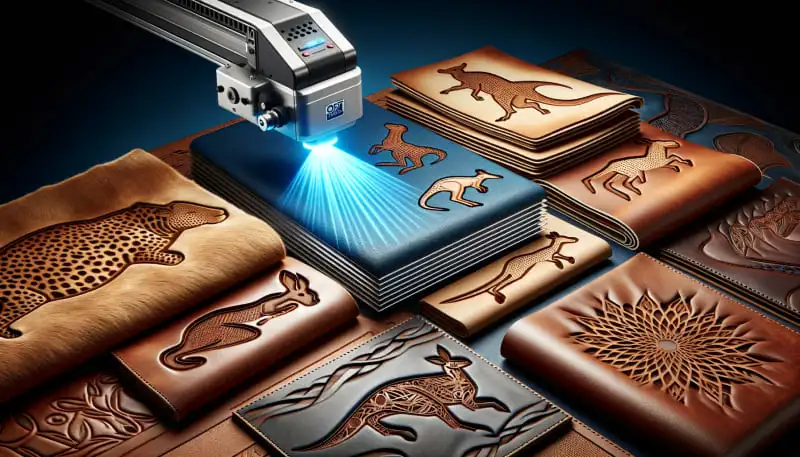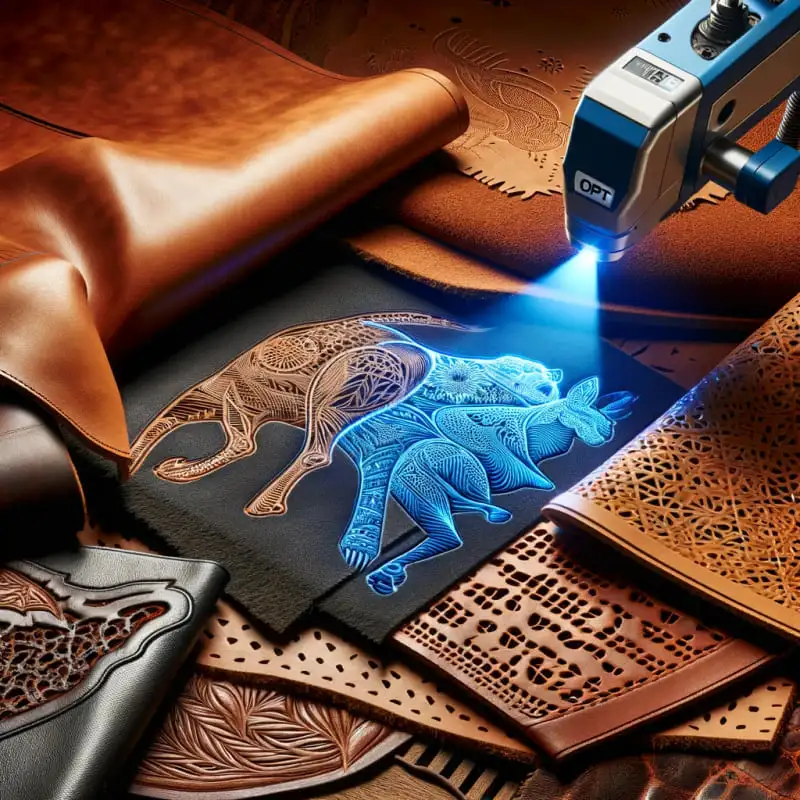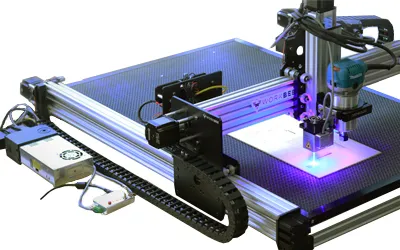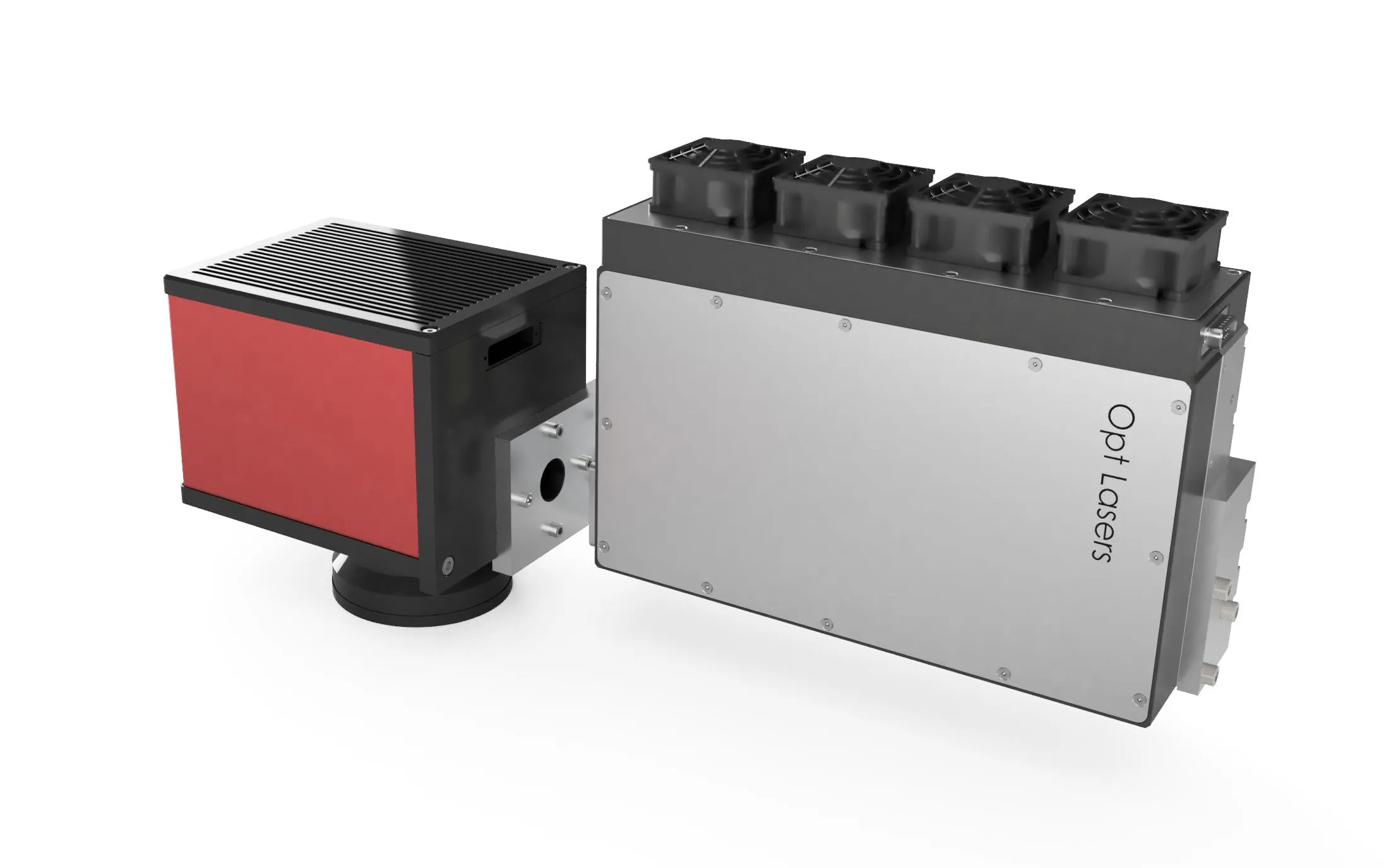Choosing the Best Laser Cutter for Leather - A Complete Guide

Leather crafting enthusiasts know the importance of precision and quality when it comes to working with leather. Opt Lasers offers a range of blue laser cutters specifically designed for leather cutting and engraving tasks. In this comprehensive guide, we will explore the key factors to consider when choosing the best blue laser cutter for leather from Opt Lasers. From power and precision to software compatibility and customer support, we will cover everything you need to know to make an informed decision for your leather crafting projects.
Understanding Leather Cutters
Your journey to finding the best blue laser cutter for leather begins with understanding the intricacies of these useful devices. From two basic definitions, through the laser types available, to how they work with leather materials, this comprehensive guide will equip you with the knowledge needed to make an informed decision.
Definition of Laser Cutter for Leather
A laser cutter for leather, (also called leather laser cutter) is a high-precision, technologically advanced (yet user-friendly) device designed for cutting, engraving, or etching patterns and designs into leather materials. Utilizing focused laser beams, it enables detailed manipulation of leather surfaces without direct contact, preserving the material's integrity while ensuring unparalleled accuracy in design execution. The laser cutter for leather streamlines the creation process, allowing for quick adjustments and the development of detailed designs, motifs and textures. It represents a significant advancement over traditional manual leatherworking tools, which necessitate manual adjustments to the cutting equipment for each new project.
Most efficient leather laser cutters utilize blue lasers, which offer a technological leap over CO2 laser (or fiber laser) solutions for leather processing. Both laser cutters and engravers for leather are best utilized in the form of high-quality blue laser head, such as Opt Lasers' XT8 or XT-50 blue laser heads, which are mounted on a complimentary high-quality CNC machine - for instance Shapeoko Pro or X-Carve Pro.
Compared to a laser engraver for leather, a laser cutter for leather typically refers to a higher optical (laser) power blue laser head, for instance a 45 W blue laser head, such as the Opt Lasers' XT8. The two products presented below show two example leather laser cutters for CNC machines, manufactured by Opt Lasers: an XT-50 laser head and an XT8 laser head. You can find a leather cutting laser kit for various CNC machines by visiting Opt Lasers' Plug&Play Laser Kits for All CNC Machines webpage.
Leather Cutting Definition
Leather Cutting is the process of shaping, sizing, or patterning leather materials through the removal of parts of the material. Leather cutting can be performed using various tools, from traditional hand tools like knives and scissors to advanced machinery such as laser cutters. The latter offers precise control over the cutting process, enabling the creation of complex designs and efficient production workflows. Leather cutting is a fundamental technique in leathercraft and the production of goods such as clothing, accessories, and upholstery, requiring skillful execution to maintain the material's quality and aesthetic appeal.
Navigating Through Different Types of Leather Laser Cutters
Your first step in selecting a laser cutter for leather is to choose the right type for your specific needs. Opt Lasers offers a range of blue leather cutting laser heads, which is the most efficient laser type for leather cutting. Meanwhile, you can also find other types of lasers on the market that can be used for leather cutting, including fiber lasers, diode lasers, and CO2 lasers, each with its unique effect on various types of leather. The table below breaks down the key differences between these types, helping you narrow down the best choice for your leather cutting projects.
| Laser Type | Laser Type's Features in Practice |
|---|---|
| Fiber Lasers | Theoretically offers high electrical energy efficiency, but works poorly for almost all leather types apart from deer leather due to inferior fiber laser absorption rates on leather. |
| Blue Diode Lasers | Most efficient and precise for leather cutting. Low upfront cost, negligible upkeep/maintenance and fast. |
| Hybrid Lasers | Combines the benefits of both fiber and blue diode lasers, but for engraving leather practically all leather cutting and engraving work is done by the blue laser. |
| CO2 Lasers | CO2 lasers waste 95–96% of supplied electrical energy (including chiller), translating to high upkeep and energy bills, and are much more likely to leave burn marks on leather. CO2 lasers also evaporate leftover water content from leather, drying it out and necessitating applying moisturizer on the leather after the cutting is done. Furthermore, unlike blue lasers, CO2 lasers are likely to make the leather smell bad after cutting. |
| UV Lasers | Problematic to use as lower wavelength UV lasers with wavelength of 280–315 nm are very carcinogenic, while 315–400 nm wavelength UV lasers may be slightly carcinogenic in large doses. |
The final decision will depend on factors such as your budget, required CNC machine size, the complexity of your projects, and the desired level of precision. The more you understand the differences between these types of blue laser cutters, the easier it will be to make the right choice for your leather cutting needs.
How Blue Lasers Work with Leather Materials
Work with Opt Lasers' blue laser cutters for leather is a seamless process that combines high-powered lasers with advanced easy-to-use software (such as Lightburn or Vectric) to deliver precise and effective cuts. The blue laser beam is focused on the leather material, where it rapidly heats and vaporizes the surface to create clean and sharp edges. This method allows for detailed designs and intricate patterns to be cut with ease, making blue laser cutters the go-to choice for leather processing factories, tanneries, as well as leather crafting enthusiasts and professionals alike.
Factors to Consider When Choosing a Laser Cutter
Clearly, when selecting a blue laser cutter for leather, there are several key factors to take into account to ensure you make the right choice. The most rational choice is to go for a blue laser head. Fiber lasers are highly ineffective for leather, unless you desire to laser cut deer leather and no other type of leather. Nevertheless, CO2 lasers, while annoying to use and maintain, are available in a wider range of high optical powers. This comes from the fact that CO2 lasers have been developed and perfected on the market for decades, while the world's first blue laser head with three laser diodes has been released relatively recently in 2020 by Opt Lasers. On the other hand, Opt Lasers' 45 W blue laser head with 8 laser diodes has been released in early 2024. Since high-power CO2 lasers have been around for decades, this causes misadvertent misinformation, with many outlets and manufacturers still thinking that CO2 lasers are the best for leather, while, as a matter of fact, CO2 lasers are now obsolete and inferior to available blue laser solutions.
In general, blue lasers offer the best absorption and effectiveness for leather, although the cutting speed for a single modern blue laser head will be smaller than that of a CO2 laser with a much higher optical (laser) power. Nevertheless if you compare same laser power blue laser to the same laser power CO2 laser, blue laser will cut the leather at a faster rate, and with much lower energy consumption. Effectively, you can mount multiple blue laser heads on the same CNC machine to boost the cutting speed, as blue lasers are highly scalable. One hundered blue laser heads can occupy the same space as a single CO2 laser - with the former having effectively much lower laser power than the sum of the power of individual blue laser heads. Blue laser heads are also much more precise.
From material compatibility and thickness to power output and precision, each factor plays a crucial role in determining the suitability of the laser cutter for your specific needs.
Material Compatibility and Thickness
Laser cutters differ in their ability to work with various materials and thicknesses. It is imperative to choose a laser cutter that is specifically designed to cut leather with precision. Different laser cutters will be more suitable for cutting different thicknesses of leather. For instance, XT8 blue laser head (as well as CO2 lasers) can laser cut any thickness of leather in a single pass, while XT-50 works best for single pass cutting of leather thicknesses up to 1/12" (2 mm). XT-50 laser can however also cut 6 mm thick leather, altough it is then advised to be done in several passes, lowering the laser head after every pass to achieve higher laser cutting speeds.
Power Output and Precision
There's no denying the importance of power output and precision in a laser cutter. Higher power output allows for faster cutting, while precision ensures clean and accurate cuts. Opt for a laser cutter that offers the right balance between power output and precision to achieve the best results for your leather cutting projects. A good example of such a laser cutter is the XT8 laser head from Opt Lasers.
Material compatibility, thickness, power output, and precision are crucial factors to consider when choosing a laser cutter for leather. By carefully evaluating these aspects, you can select the best blue laser cutter that meets your specific requirements and ensures optimal performance for your leather cutting projects.
CNC Machine Size
It is also important to consider the size of the CNC machine on which you will cut your leather. Smaller CNC machines can only accomodate very small leather patches and are mostly unsuitable for large pieces of leather. This is particularly important for leather that comes from larger animals, for instance cowhide leather which can be quite large in size. More specifically, you should indetify the machine's working area, which is always a bit smaller than the size of the machine itself. For instance, a 4×4 Shapeoko Pro CNC machine, which you can mount your Opt Lasers XT8 blue laser kit on, has a footprint of 60" × 59", while the working range is 48.7" × 48.7".
Step-by-Step Guide to Selecting Your Laser Cutter
In order to select the best laser cutter for your needs, we recommend following our step-by-step plan below:
- Make an Initial Plan for Your Business' Transition to Blue Laser Technology: Make a list of all types of leather that you use in your leather processing plant or factory. Decide, depending on your company's output whether you want to cut all leather with blue lasers in near future or if you want to do the transition in steps.
- Use Opt Lasers' Free Material Tests Service: Fill out Opt Lasers' Material Test Questionnaire and send test leather samples for free tests of laser cutting and engraving. This will ensure you can make an informed decision.
- Check the available CNC machines on the market: Learn what CNC manufacturers have already integrated CNC lasers on their machines (for instance ShopSabre, Avid CNC or I2R), or which CNC machines are commonly upgraded with a laser by their users themselves (for instance Shapeoko Pro or X-Carve Pro). Decide what CNC machine(s) you want to acquire for your laser head(s).
- Calculate the budget for transition: Find out how much money you need to invest, and how much this investment will be paying itself back in savings. Make a comprehensive roadmap to your transition to blue laser technology.
- Contact Opt Lasers about multibuy discounts: Once you have a plan, contact Opt Lasers about the discount for purchasing multiple laser kits.
- Purchase a blue CNC laser kit from Opt Lasers: Once you've decided how you want to proceed with integrating blue lasers for leather cutting, you can purchase a dedicated laser.
Discover the Best Leather Blue Laser Engraving Products
Maximizing Laser Cutter Performance
There are several steps that let you maximize your leather cutting performance.
Advanced Leather Cutting Techniques
There are several leather cutting techniques that will help you maximize your leather cutting speed.
Adding Air Assist
Adding Air Assist can increase your leather cutting speed even further, allowing you to reach 2–3 times higher cutting speed (and up to 6.5-fold higher speed).
Regular Cleaning
With respect to maximizing the performance of your blue laser cutter, proper maintenance and safety practices are crucial. Here are some tips to ensure the longevity and safety of your machine:
- Regularly clean the optics to maintain cutting precision and to avoid lens coating degeneration
- Keep the workspace well-ventilated to reduce smoke and fume build-up
- Check and replace worn-out parts if needed to avoid unnecessary complications
Consistent adherence to maintenance and safety protocols will not only prolong the lifespan of your laser cutter but also ensure the safety of the operators and the workspace. After all, a well-maintained machine is a reliable machine.
Post-cutting Ventilation and Odor Removal
While blue laser cutters produce much less fumes in leather processing than CO2 lasers, there are several techniques that you can use to elimate strong smells coming off your cut leather.
- Ventilation with ozone generator: Ventilating the cuts of leather with ozone generator, after the leather been laser cut can quickly and effectively eliminate the smell in just a few hours.
- (Patented) Treatment with Zinc Ricinoleate based odor absorber: This method has been patented, with the anticipated patent expiry date on 11.08.2030.




